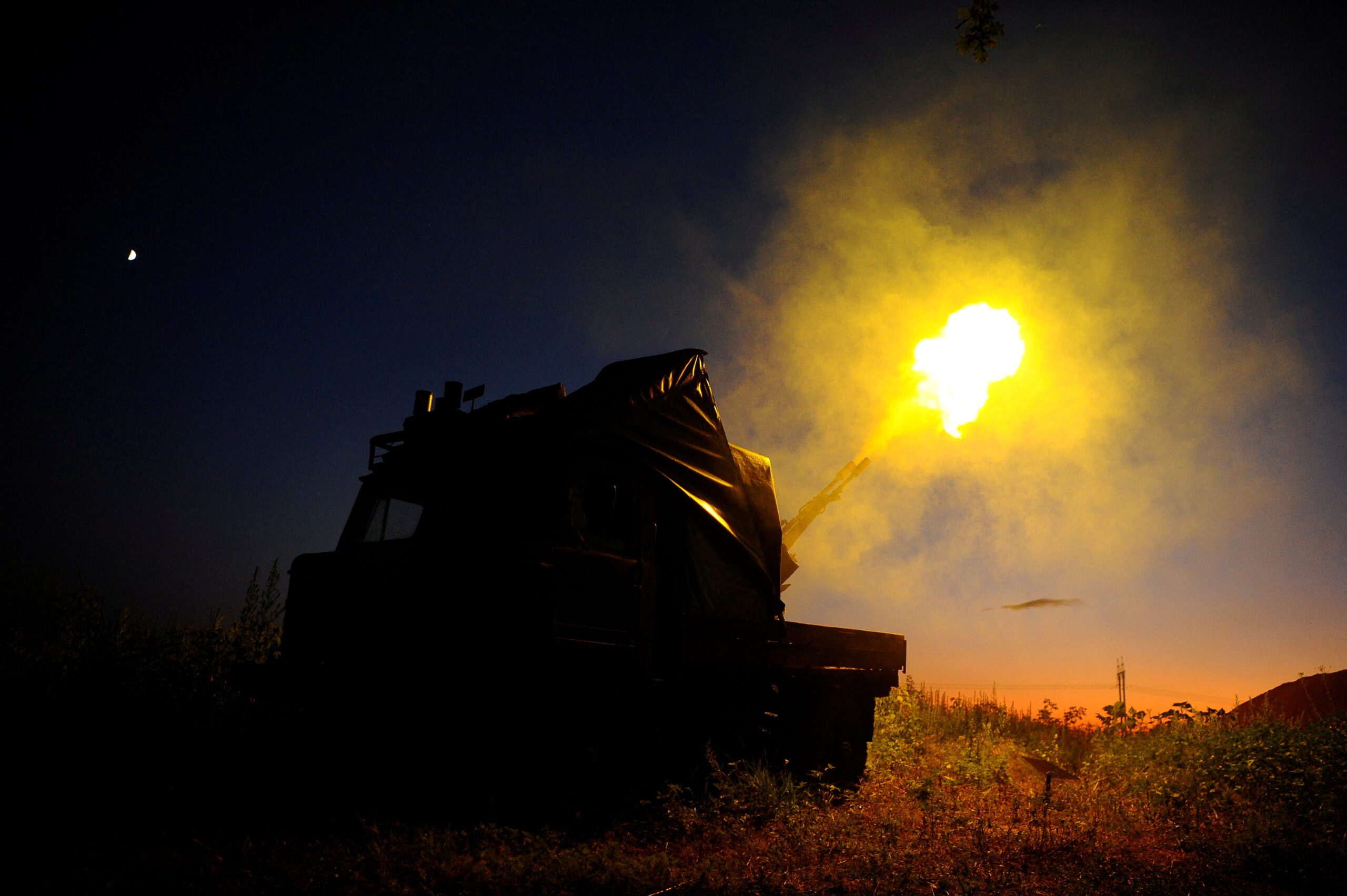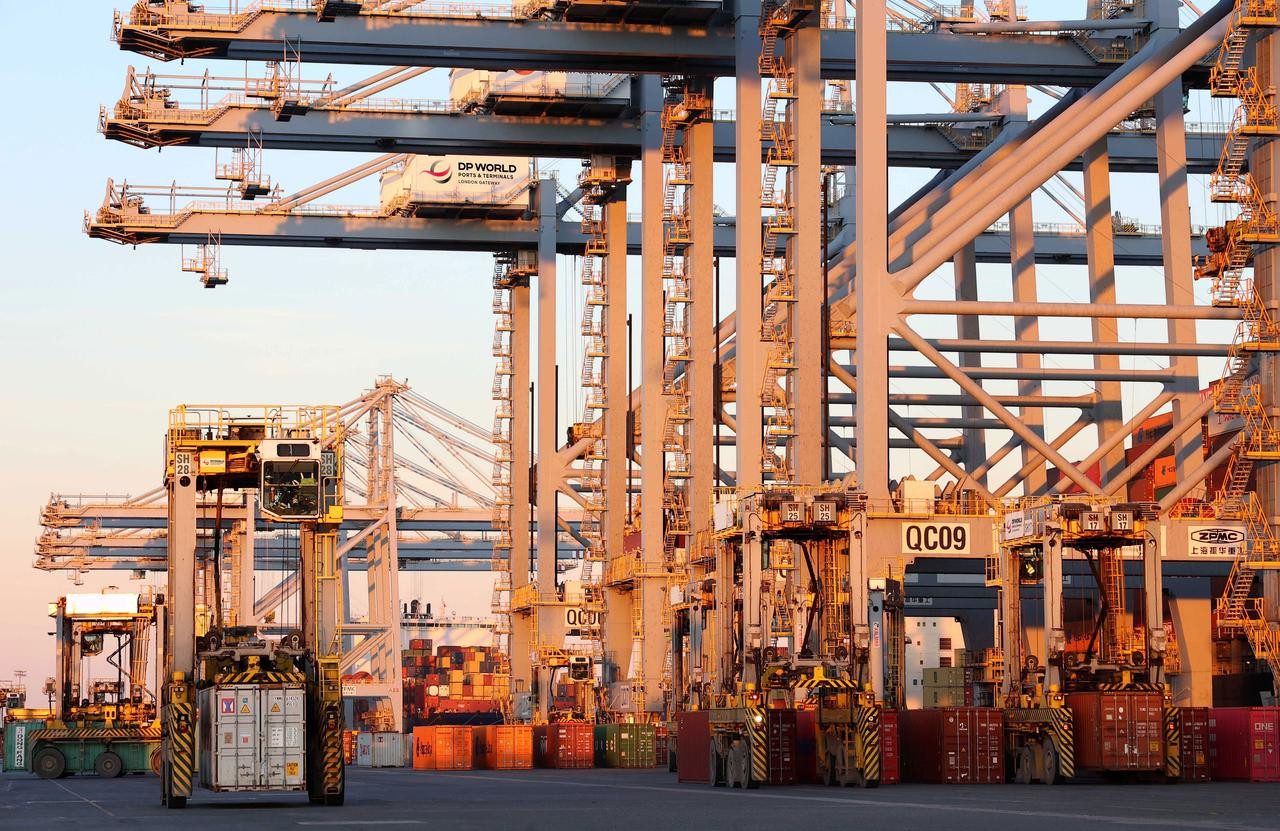Handymax dry cargo vessel discharging salt in Kalundborg, Denmark. Image: Jon Norddahl/Norden
(Bloomberg) — D/S Norden A/S, Europe’s biggest commodity shipping company, is poised for a second consecutive quarterly profit after concluding that smaller vessels would earn more than larger ones as economies slow.
The operator of the region’s biggest fleet bet that vessels carrying a broader range of goods would beat more specialized ships in a year when the International Monetary Fund predicts global trade will slow to 3.8 percent from 5.9 percent. Norden, based in Hellerup, Denmark, will also benefit as drought from the U.S. to Europe to Asia reduces grain exports the most in 27 years, according to the U.S. Department of Agriculture.
Rates for Handysizes have exceeded Panamaxes, which carry twice as much cargo, since May 23, the longest stretch since at least 2006. Norden agreed to haul more Panamax cargoes than its fleet can carry, hiring extra shipping capacity from other companies as costs fell, and put about half its Handysizes in the spot market, allowing it to reap a windfall if rates rise, Executive Vice President Martin Badsted said in an interview.
“Panamaxes are massively oversupplied at a time when grains shipments are at risk, while Handysize fleet growth is much more modest and they carry a wider mix of cargoes,” said Marc Pauchet, a London-based analyst at ACM Shipping Group Plc, a shipbroker with staff in 10 cities from New York to Shanghai. “This is the best trade there is for owners who have a mixture of long and short strategies.”
Net Income
Shares of Norden gained 5.3 percent to 141.60 kroner in Copenhagen trading this year and will reach 179.50 kroner in 12 months, according to the average of eight analyst estimates compiled by Bloomberg. The MSCI All-Country World Index of equities advanced 8.5 percent and Treasuries returned 1.2 percent, a Bank of America Corp. index shows.
Norden will report third-quarter net income of $12.9 million and $10.4 million for the following three months, according to the mean of nine estimates. That the company last had a back-to-back profit in the second quarter of 2011 shows the scale of the industry’s rout. The Baltic Dry Index of commodity shipping costs averaged 945 since the start of this year, the lowest since 1986.
Rates for Panamaxes, holding about 75,000 metric tons of cargo, plunged 50 percent to $6,516 a day this year, according the Baltic Exchange in London, which publishes costs along more than 50 maritime routes. After retreating since June, Handysizes are now 15 percent lower at $7,091. Panamaxes mostly carry coal, iron ore and grain. Handysizes also haul steel, cement, wood, sugar and fertilizers and often have cranes on board, making them less dependent on port facilities.
Steepest Decline
Grain shipments will drop 9.1 percent to 289.4 million tons in the 2012-13 marketing year, the steepest decline since 1985- 86, the USDA estimates. U.S. farmers, the biggest agricultural exporters, are enduring the worst drought since 1956, heat waves are searing crops from Spain to the Black Sea region, and India’s monsoon is about 15 percent below normal. The trade occupies 43 percent of Panamaxes and 19 percent of Handysizes, according to ICAP Shipping International Ltd.
While coal is the largest Panamax cargo, the influence of grains cargoes increases in the fourth quarter, when harvests are completed. Average returns peaked in those three months in six of the past 10 years, Baltic Exchange data show.
Iron Ore
Global trade may weaken further, diminishing the number of cargoes available for Norden’s Handysizes operating in the single-voyage market. The IMF cut its 2012 world trade forecast to 3.8 percent from 4 percent last month, figures that compare with 5.9 percent in 2011. The 17-nation euro area contracted 0.2 percent from April to June and China has slowed for six consecutive quarters.
China consumes more coal and iron ore than any other nation and the raw materials are the second- and third-biggest seaborne cargoes, behind crude oil. Trade in dry-bulk commodities will advance 4 percent this year, from 6 percent in 2011, according to Clarkson Plc, the world’s biggest shipbroker.
That may not be enough to erode the shipping industry’s capacity glut. The global fleet of bulk carriers expanded 54 percent since 2008, according to data from IHS Inc., an Englewood, Colorado-based research company. Owners embarked on the building program after rates surged, with Panamaxes peaking at $94,977 a day and Handysizes at $49,397. The arrival of the new vessels came as the world economy was plunged into its deepest recession since World War II.
Bulk Carriers
The combined market capitalization of the 14-member Bloomberg Pure Play Dry Bulk Shipping Index has fallen to $5.64 billion from $36.2 billion in May 2008. Norden is valued at 6.1 billion kroner ($1 billion) and has the largest weighting in the index. It is followed by Antwerp, Belgium-based Cie. Maritime Belge SA and Seoul-based STX Pan Ocean Co.
Norden will report a loss of $254 million for 2012 after writing down $300 million of the value of its fleet in May, according to the mean of 11 analyst estimates compiled by Bloomberg. The value of a five-year-old Panamax plunged 25 percent to $22.1 million in the past year, data from the Baltic Exchange show.
Outstanding orders at shipyards still equal 33 percent of existing Panamax capacity, compared with 22 percent for Handysizes, IHS data show. The Panamax fleet will expand 16 percent this year, more than three times faster than Handysizes, Clarkson estimates.
Scrap Metal
Trade in fertilizers will grow 3 percent to 100 million tons, according to Clarkson. Shipments of minor bulk cargoes from forestry products to scrap metal, which tend to go on smaller ships, will also advance 3 percent. No single cargo represents more than 10 percent of demand for Handysizes, Norden’s Badsted said by phone Aug. 15.
Norden operates 78 Panamaxes and 40 Handysizes, according to a quarterly report Aug. 15. The largest owners of Handysizes are China Shipping Group, Polish Steamship Co. and Cosco Group, with at least 60 each, Clarkson data show.
“Handysizes are more flexible and volumes are not that bad,” said Dan Togo Jensen, an analyst at Svenska Handelsbanken AB in Stockholm whose recommendations on the shares of shipping companies returned 16 percent in the past six months. “Norden is in a stronger position.”
– Isaac Arnsdorf, Copyright 2012 Bloomberg

 Join The Club
Join The Club



![Nordon’s Fleet of Handymax Bulkers are Outperforming Ships Twice their Size [REPORT]](https://gcaptain.com/wp-content/uploads/2012/08/Screen-shot-2012-08-21-at-1.29.16-PM.png)







